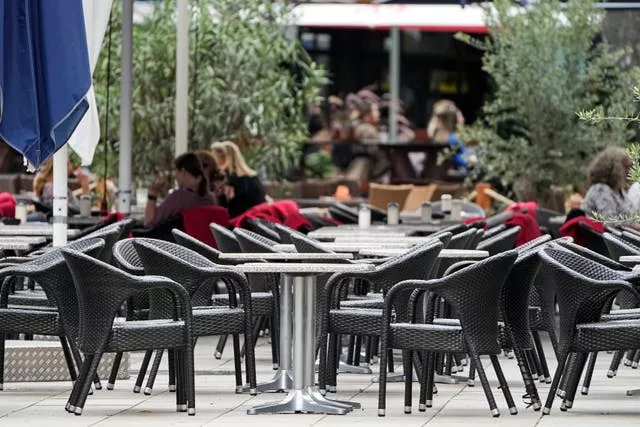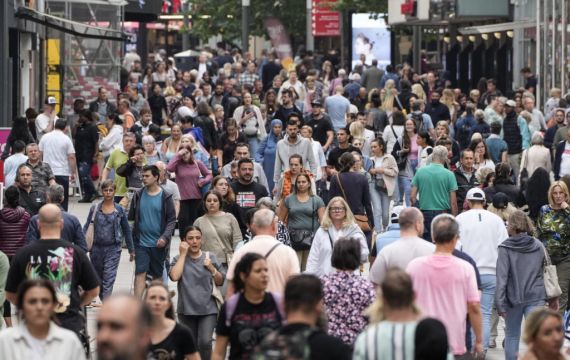Inflation that has been plaguing eurozone countries declined sharply in September, figures show.
The data strengthens hopes that consumers will eventually get relief from high costs – and that the European Central Bank (ECB) will not have to further restrict the economy by raising interest rates from already-record highs.
The annual rate was 4.3% this month, a drop from 5.2% in August.
However, recent higher oil prices are casting a shadow over the prospects for beating inflation back down to the central bank’s target of 2%.
Core inflation, which excludes volatile fuel and food prices, fell more than analysts expected to 4.5% from 5.3%, according to data released on Friday by the European Union’s statistics agency, Eurostat.

The ECB closely watches this figure to assess how inflation is coming down.
The fall in core inflation “reinforces our view that the ECB has finished raising interest rates”, said Jack Allen-Reynolds, deputy chief eurozone economist at Capital Economics. He predicted that the overall inflation rate would tumble to 3.5% by the end of the year.
Energy prices dropped 4.7% in September, while food price inflation remained uncomfortably high at 8.8%.
Readings across the major economies that use the euro currency were a mixed bag. Germany’s annual inflation fell to 4.3% in September from 6.4% a month earlier, while Spain’s increased to 3.2% from 2.4%.
Economists warn, however, that the large drop in Germany, the 20-country eurozone’s largest economy, was exaggerated by a statistical quirk – the end of a subsidised transportation ticket and a fuel subsidy in September 2022 that had raised consumer prices that month.
The latest inflation figures follow what may have been the final interest rate increase by the ECB in its swift series of hikes. It brought its benchmark deposit rate to a record high of 4% this month, up from minus 0.5% in July 2022.

ECB president Christine Lagarde said that if interest rate levels are maintained for a “sufficiently long duration”, that would make a substantial contribution to returning inflation to 2%, a goal the bank does not expect to reach until 2025.
High prices have been holding back the European economy because people’s paycheques do not go as far as they used to in covering their bills, forcing them to cut back on other spending.
Economic growth has stagnated to just above zero in the first six months of the year, with some indicators pointing to a downturn in the current July-to-September quarter.
This burst of inflation was set off as the global economy rebounded from the Covid-19 pandemic, leading to shortages of parts and raw materials. It got worse when Russian invaded Ukraine, sending energy prices soaring as Moscow cut off most natural gas to Europe.
Supply chain bottlenecks and energy prices have eased, but inflation has worked its way through the economy. Prices are higher for services such as haircuts and hotel stays, and workers have demanded pay rises to make up for their lost purchasing power.

The ECB has been trying to get a handle on inflation by raising interest rates, which make it more expensive to borrow for big purchases such as houses or new factory equipment to expand a business.
That reduces demand for goods and, in turn, inflation.
But higher rates also can weigh on economic growth, leaving the central bank facing a balancing act over how far to go.
Many economists think the ECB has finished raising rates unless something drastic happens to keep inflation from falling further.
That could be a further increase in oil prices, which have risen recently after major producers Saudi Arabia and Russia extended production cuts.







